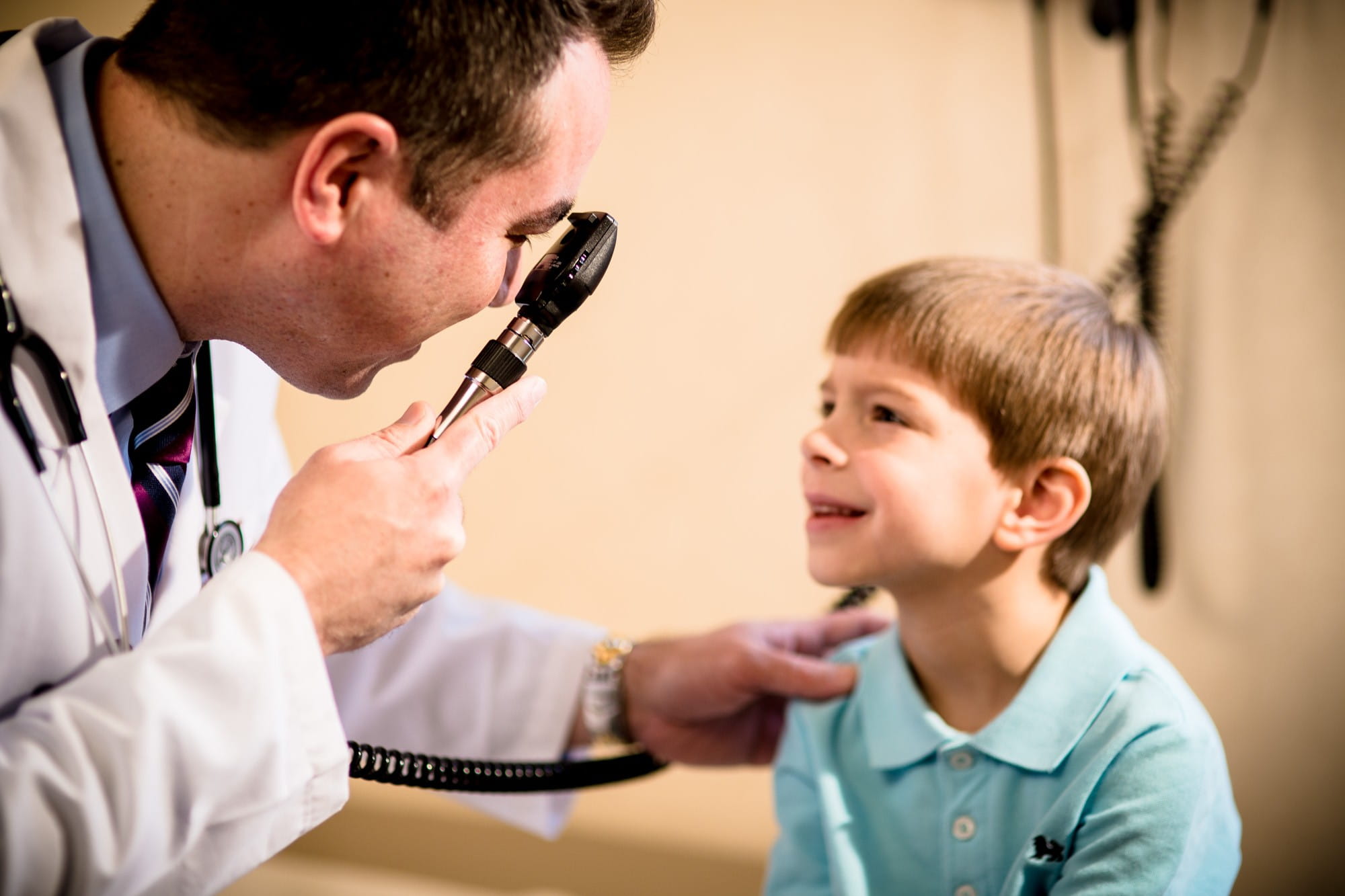description:
Kids, for all their youth and vigor, aren’t indestructible. They’re always growing, which makes their health needs different from those of the average adult. Enter pediatricians: trained medical experts whose sole mission is to help children reach their maximum potential.
episodes:
01. Fever: Then and Now
How do pediatricians treat the unique needs of children? This introductory lecture examines early pediatrics (using Helen Keller as an example), walks you through a 21st-century pediatric exam, notes the challenges pediatricians face, and presents a fever action plan” you can refer to when a child has a fever.”
02. The Challenges of Pediatrics
Assume the mantle of medical student and join Dr. Benaroch in his pediatric office, where you’ll meet Jenna, a 14-year-old girl suffering from abdominal pain. As you follow the steps pediatricians follow to narrow down a diagnosis, you’ll also learn about different types of abdominal pain and their root causes.
03. Struggling with Ear Pain
Focus on one of the most common medical problems diagnosed by anyone who provides medical care for kids: ear infections. While it may seem like a simple problem, it turns out there are a lot of ways ear infections present themselves-and a lot of ways doctors treat them.
04. The Allergic March
Welcome to the complex world of childhood allergies. How do pediatricians know when to diagnose a specific allergy? How do allergies cause different problems at different ages? What are the best ways to avoid specific allergens? Follow one patient on the allergic march” as his symptoms evolve, beginning with eczema.”
05. Problems with Growth
All healthy children should grow well, but sometimes they don’t grow as expected. Consider the catalysts of growth in the human body and the places where growth can go wrong, including hormonal imbalances and rare genetic conditions. Then examine one young patient’s growth dilemma and see if you can figure out the cause.
06. Childhood Obesity
Meet Chaz, a 16-year-old whose complaint of a headache” sparks an in-depth discussion on childhood obesity. You’ll cover the orthopedic complications, the psychological problems teens can suffer, the genetic influences of obesity, and ways to support healthy change in obese children.”
07. The Critically Ill Child
Children are mostly healthy and strong, but they’re nevertheless constantly vulnerable to infectious organisms. Learn some of the specific critical thinking and detective skills great pediatricians use to tell genuinely sick children from those who are going to be OK. Plus, discover why pediatricians should never trust a newborn.””
08. Getting the Most out of Checkups
In this lecture, learn the inner workings of routine pediatric checkups. Dr. Benaroch reviews standard childhood growth and development; discusses how screening tests, chart reviews, standard examinations, and anticipatory guidance” work; and offers insights to help parents get the most out of their child’s next scheduled checkup.”
09. Noisy Breathing
Get a window into how pediatricians uncover potentially serious symptoms that they sometimes can’t see or hear. Topics include the differential” (a list of possible diagnoses), the importance of describing symptoms as accurately as possible, and why listening and building good communicative rapport are the most important tools in a pediatrician’s toolbox.”
10. Trouble in School
What role can (and should) pediatricians play when a child isn’t doing well in school? Discover how doctors ferret out clues from kids unwilling (or embarrassed) to talk, and see how they work with parents and teachers to accommodate and alleviate scholastic stresses.
11. The Premature Baby
Visit a neonatal intensive care unit (NICU) that provides specialized care to sick newborns. You’ll learn about Apgar scores (which judge a newborn’s health), the dangers of neonatal pneumonia and congenital heart disease, and how pediatricians take care of premature infants.
12. Pain as a Warning Sign
Some pain is fleeting. Some pain should make parents worry. Discover how different specialists (including orthopedists, rheumatologists, oncologists, and psychiatrists) think about and approach pain in children. Then, find out how doctors break the news of a life-changing diagnosis to a child and his or her family.
13. Better Sleep for the Whole Family
Focus on helping children of any age (and their parents) get a good night’s sleep. You’ll learn how to establish healthy sleep associations with children, go inside sleep issues like narcolepsy and sleep apnea, and learn how to help reset” a child’s body clock to get better sleep.”
14. Developmental Delay
Getting to know children as they grow lets pediatricians see how problems manifest at different ages. Here, meet Casey, whose development over time is a window into the world of delays in growth stages-and discover how doctors and families adapt to these circumstances.
15. Is This Child Normal?
In this powerful lecture, a patient case study offers a look at what Dr. Benaroch calls the grey zones of normal.” Witness how a pediatrician’s ongoing relationship with his or her patient establishes the trust necessary to discuss issues of patient privacy, bullying, gender issues, and drug use. Find out how these confidences lead to an accurate diagnosis.”
16. International Adoption
Discover what health challenges children adopted from other countries are likely to face when arriving in the United States. How do pediatricians handle language barriers? What screening methods are appropriate to get a good picture of a child’s health? The secret, you’ll learn, is doing the best you can with the clues you’ve got.
17. The Tools of Discipline
Meet several children trying to overcome behavioral challenges, including a compulsive liar, a six-year-old who won’t sleep in his own bed, and an 18-month-old girl with temper tantrums. Along the way, you’ll learn when to contact a specialist, the keys to effective discipline, and more.
18. Psychiatry in Pediatrics
From headaches to irritable bowel syndrome, many symptoms are affected by the connection between the mind and body, which makes understanding psychology essential to pediatric care. Here, Dr. Benaroch illustrates how pediatricians navigate the waters of behavioral and psychosomatic symptoms that have a significant impact on the lives of children and their families.
19. Scratching for Clues
Kyle, a homeless teen, arrives in your office complaining of a lump” in his neck. The path to Kyle’s diagnosis leads you through topics ranging from toxic stress to prevalent diseases facing homeless youth (including mononucleosis and sexually transmitted diseases).”
20. Common Symptoms, Uncommon Diagnoses
Test your creativity with cases where common symptoms mask uncommon causes. There’s Mabel, whose cold” has another cause; Peter, whose vomiting is not a typical tummy bug; Crystal, whose legs are covered in mysterious sores; and Vipul, whose nosebleed illustrates the unusual ways that children can get themselves into trouble.”
21. Coping with Pediatric Tragedies
Sometimes, tragedies happen. Learn how pediatricians examine their patients, investigating every potential factor that might cause medical distress. Discover what pediatricians do in painful situations, and get an intimate view into how pediatricians work with families facing a loss.
22. The Girl Who Turned Yellow
Hailey arrives in your office with a urinary tract infection (UTI). But what happens when the treatment leads to something that’s even more potentially dangerous? Gain insights into the two types of UTIs and the advantages-and disadvantages-of antibiotic usage.
23. A Different Cause of Vomiting
Follow Dr. Benaroch as he drills down through potential problems to the underlying cause of one patient’s stomach pain and vomiting. Along the way, you’ll learn how doctors determine the source of abdominal pain by dividing the abdomen into four quadrants, which contain different organs.
24. Pediatrics of the Future
Examine several cases that illustrate just how far pediatrics has come-and where the field might be able to go next. You’ll get up close and personal with the future of medicine, including gene therapy, fetal surgery, cochlear implants, and pharmacogenomics (which can tailor medications to an individual’s genetic makeup).










